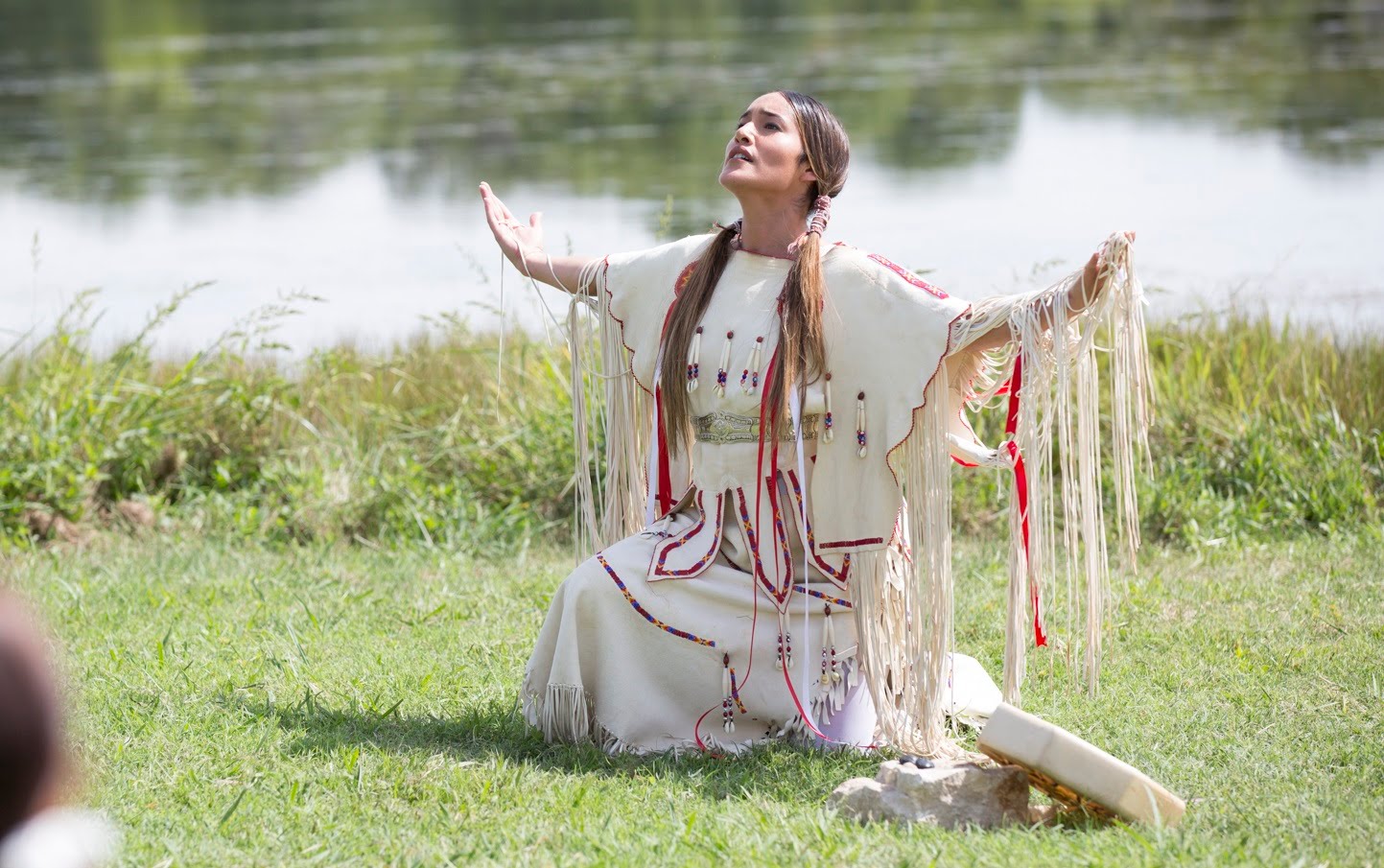MOVIE REVIEW: Te Ata
TE ATA-- 4 STARS
Not all actors and actresses are motivated by fame and profit. Some are in it for the performance and chance to share culture through an artistic medium. Before the hey-day of cinema, one such actress captured the fascination of an audience higher than any Hollywood premiere and did so as an ostracized minority. Better yourself with a slice of history to learn about Mary Frances Thompson, or, as she was called on stage, Te Ata.
The New World’s ingenue Q’orianka Kilcher stars as the woman who would be named the state of Oklahoma’s first State Treasure in 1987 and live to the grand age of 99. Thompson was a member of the Chickasaw Nation, the biracial daughter to their county’s treasurer (Gil Birmingham of Wind River and Hell or High Water) and niece to Douglas Johnston (Dances With Wolves Oscar nominee Graham Greene), the territory’s final governor before Oklahoma was granted statehood in 1907. Since a young age, Mary showed a deep connection to the Native American traditions to her people as well as the progressive interest to be educated in the world outside of Oklahoma.
Leaving home to attend the Oklahoma College for Women introduced her to the theater. Dreams of Broadway soon filled her heart and brought her to the Carnegie Institute in Pittsburgh and later to the Three Arts Club of New York City on the Upper West Side, much to her father’s dismay. Painfully and wrongfully, she weathered one racially-biased rejection after another in her efforts to be accepted as a lead actress. Spurred by her teachers, Mary conducted voiceover storytelling performances under the character name “Te Ata.” In-costume, Mary acted out spoken word renditions of Chicksaw legends and oral history tales from other tribes.
Rising to become a cultured voice for more people than her own, these shows become her dedicated focus, even against those who would protest what they deemed to forbidden pagan beliefs. It would be those artful performances at small gatherings and social functions that would catch the eye of greater and wiser audiences, namely the powerful patronage of Eleanor and Franklin Roosevelt, and also her future husband Clyde Fisher (Mackenzie Austin). “Te Ata” would go on to play for Presidents and royalty alike.
Q’orianka Kilcher leads Te Ata with a fitting sense of grace and reverence. Matching the filmmakers themselves seeking accuracy, her recreated performances reignite the beauty of the content, the talent of the storyteller, and the passion of the original actress. Her movement and words, whether in motion on the stage or still with the stalwartness to combat prejudice, flow with such ease and commitment. Kilcher is such an underused and underappreciated talent, much like the woman she portrayed.
Written by Jeannie Barbour (First Encounters) and Esther Luttrell (Lithium Springs) and directed by historical drama specialist Nathan Frankowski (To Write Love on Her Arms), the film has its biopic tropes and condensed history flaws in certain moments. However, the mission and purpose lift the lesser execution. The PG-rated Te Ata is worthy and thoughtful history, through and through, with a brave central figure perfect for the big screen treatment. The production, filmed predominantly right at home in Oklahoma, deserves high credit for collaborating with historians and benefactors to make a careful biography film honoring an impactful and important woman. In a current society begging for superior examples for girls and women, Te Ata is the kind of story young women of today need to see, hear, and experience.
LESSON #1: THE MARGINALIZATION OF MINORITIES-- Whether the people of this country care to admit it or not, the many living and extinct tribes of Native Americans experienced bigotry and discrimination arguably worse than any other non-White ethnic group. Generations of this nation’s citizens suppressed their culture and forcefully to occupation over a continent worth of land. We deserve to be the bad guys of that history lesson.
LESSON #2: EQUAL OPPORTUNITY FOR ALL-- As aforementioned, Te Ata is a respectful message film celebrating success rising from failure for, not only a woman from a pre-feminist era but a person of color as well. Mary Thompson’s story hammers the past and present need for this lesson improving the standing of women in any discipline or profession.
LESSON #3: IMPORTANCE OF SHARING OR PROMOTING CULTURE WITH OTHERS THROUGH EDUCATION AND PERFORMANCE-- Speaking as a school teacher, there is not enough of this performance content and these personalized cultural lessons beyond a written textbook page or encyclopedia article. No matter your ethnic background, people can’t learn other cultures entirely in written media. They need to see it breathe and come alive with both nuance and vigor. Be the first impression, the door opener, and the inspiration for a neophyte to learn a heritage for the first-time learner. Do it with talent. Do it with accuracy. Do it with respect and do it with pride.
LOGO DESIGNED BY MEENTS ILLUSTRATED (#607)



